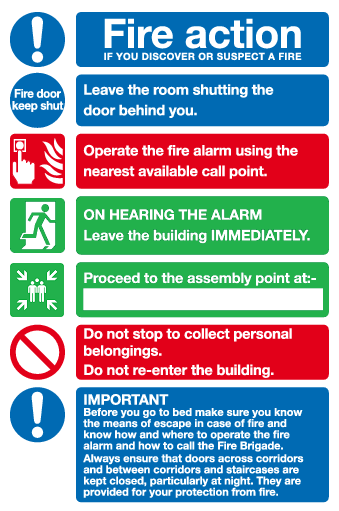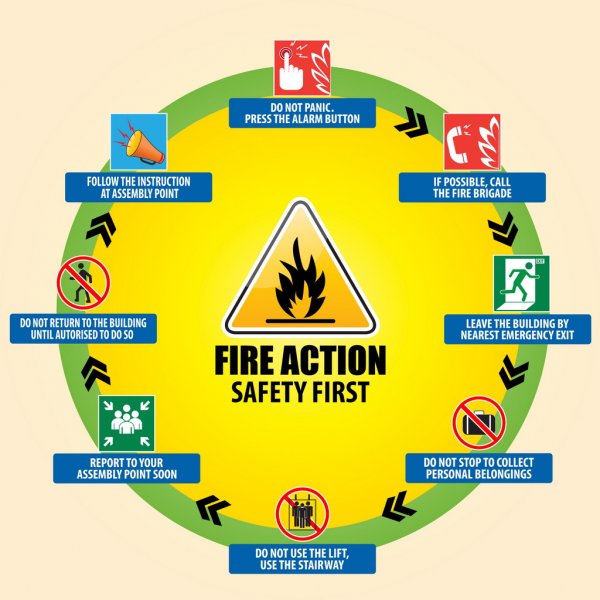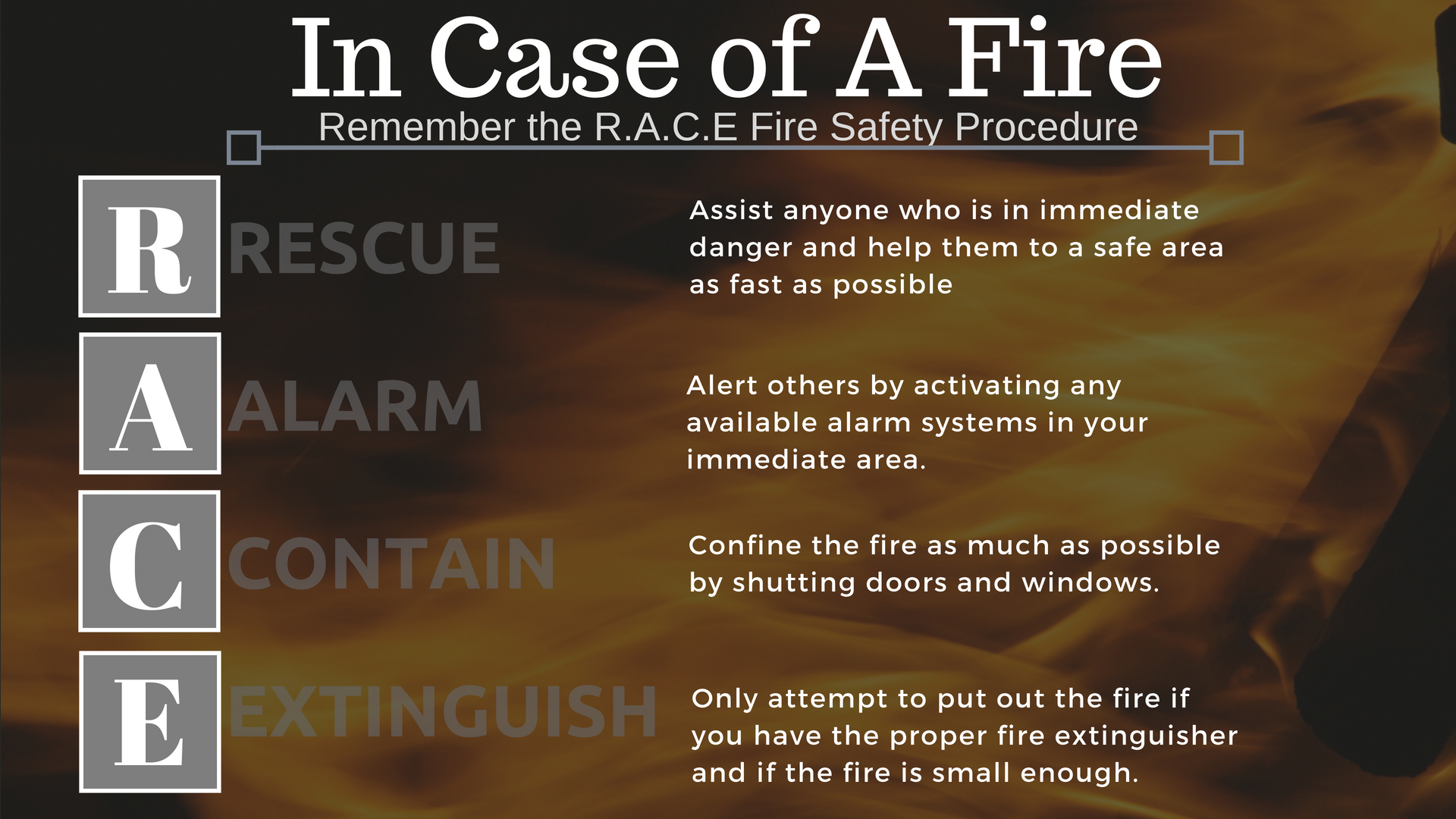
Getting everyone safely out of the building is a major part of good fire safety procedures. OSHA requires that every workplace has enough emergency exits and that the exits are suitably located to enable everyone to get out of the building quickly.
There are many factors that are considered in deciding the number and location of emergency fire exits:
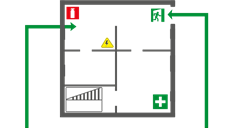
- The type of structure.
- The number of persons exposed.
- The type and extent of the fire protection available in the building.
- The type of industry involved, and
- The height and type of construction of the building.
These exits will not help in an emergency if they are blocked, locked, or unknown, though.
The fire safety procedures should designate preferred exit routes, as well as secondary exit routes in case the normal exit routes are blocked. Evacuation assembly points should be established so everyone knows where they are to go during an evacuation, and so those who have successfully evacuated can be identified.
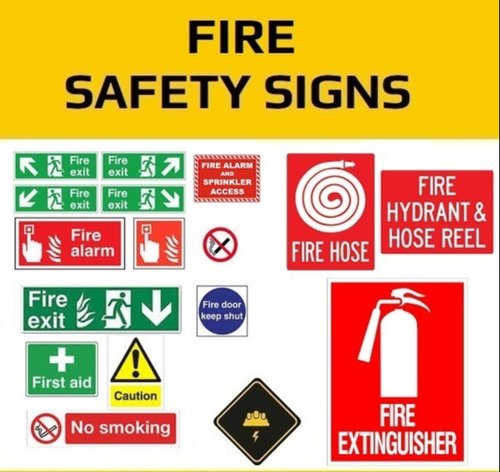
The Basic Steps in an Evacuation Procedure
- Get your workplace ready to be left unattended.
- Activate the closest fire alarm system.
- Report the location of the fire.
- Close the door to the room where the fire is located. This will confine the fire to a smaller area.
- For fire, close the doors as you go – do not lock them.
- Assist any person in immediate danger.
- Leave the building via the nearest safe route.
- Obey all directions from wardens.
- Extinguish or Evacuate.
- Do not re-enter the building.
Click here to view a video that explains the emergency evacuation procedure.
